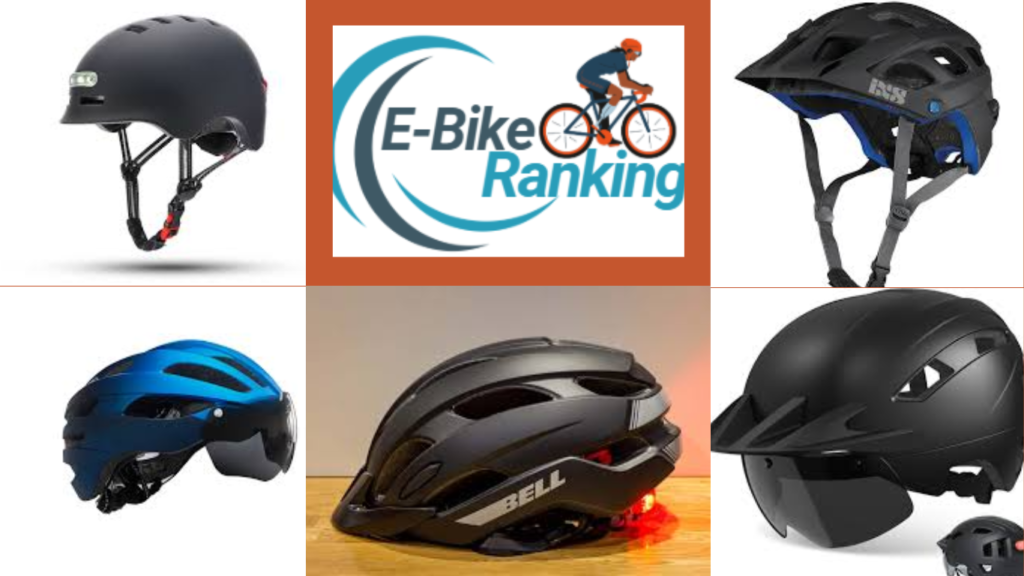Why E-Bike Helmets Matter
Riding an e-bike is an exhilarating experience, whether you use it for commuting, adventure, or leisurely rides. However, e-bikes can reach higher speeds than traditional bicycles, making safety gear, especially helmets, more critical than ever. A well-designed e-bike helmet protects you from severe head injuries and enhances your riding confidence. In this guide, we’ll explore the best e-bike helmets, safety standards, features to look for, and top recommendations to ensure you ride smart and ride safe!

Table of Contents
Understanding E-Bike Helmet Safety Standards
Before diving into the best e-bike helmets available, it’s essential to understand the safety certifications they must meet.
DOT & CPSC Approved Helmets
The Department of Transportation (DOT) and the Consumer Product Safety Commission (CPSC) establish safety standards for bike helmets. CPSC-approved helmets are required for all bicycle riders in the U.S., ensuring they meet impact resistance and strap strength guidelines. If you’re riding an e-bike that exceeds 28 mph (Class 3 or higher), you might want to consider DOT-approved helmets, which provide enhanced protection similar to motorcycle helmets.
MIPS Technology for Extra Protection
Many premium e-bike helmets come with MIPS (Multi-directional Impact Protection System), which reduces rotational forces during an impact. MIPS technology allows the helmet to absorb and redirect energy from an angled collision, reducing the risk of severe head injuries.
Best E-Bike Helmets for Safety & Comfort
Finding the best e-bike helmet requires balancing protection, comfort, ventilation, and style. Below are some top-rated options that cater to various riding needs.
1. Thousand Chapter MIPS Helmet
- Best for: Commuters
- Key Features: MIPS technology, magnetic buckle, integrated light
- Why Choose It? Stylish, lightweight, and well-ventilated, the Thousand Chapter helmet is ideal for daily commuters who want safety without sacrificing aesthetics.
2. Giro Escape MIPS
- Best for: Urban Riders
- Key Features: MIPS protection, built-in LED rear light, aerodynamic design
- Why Choose It? Perfect for city riders, this helmet provides enhanced visibility and a comfortable fit for longer rides.
3. ABUS Pedelec 2.0
- Best for: High-Speed E-Bikes
- Key Features: Extended coverage, rain cover, integrated rear light
- Why Choose It? Designed specifically for e-bike riders, this helmet provides extra head coverage and protection at higher speeds.
4. Bell Super Air R MIPS
- Best for: Off-Road and Trail Riders
- Key Features: Removable chin bar, MIPS protection, excellent ventilation
- Why Choose It? If you’re an adventure enthusiast, this helmet’s rugged build and extra coverage make it perfect for mountain trails.
5. POC Omne Air Spin
- Best for: Lightweight Comfort
- Key Features: SPIN technology (similar to MIPS), lightweight build, high breathability
- Why Choose It? A great option for riders who want a sleek, comfortable helmet with premium safety features.
Features to Look for in an E-Bike Helmet
When selecting the best e-bike helmet, consider the following factors:
1. Safety Certifications
For maximum protection, ensure the helmet meets CPSC, DOT, or NTA-8776 (European e-bike standard).
2. MIPS or SPIN Technology
For added impact protection, helmets with MIPS or SPIN (Shearing Pad INside) technology reduce rotational force injuries.
3. Fit and Comfort
A well-fitting helmet should sit snugly on your head without causing pressure points. Look for adjustable retention systems to fine-tune the fit.
4. Ventilation
Good airflow prevents overheating. Helmets with multiple air vents and moisture-wicking liners keep you cool during long rides.
5. Built-in Lights and Reflectivity
For night riders or commuters, helmets with integrated rear LED lights and reflective elements enhance visibility.
6. Weight
Lighter helmets are more comfortable, especially for extended rides. Carbon fiber or polycarbonate shells provide durability without excess weight.
7. Visor and Eye Protection
Some helmets come with a built-in visor or goggles, protecting you from sun glare, wind, and debris.
E-Bike Helmets vs. Traditional Bike Helmets
While a regular bike helmet offers basic protection, e-bike helmets are designed to handle higher speeds and impact forces. Here’s a comparison:
| Feature | Traditional Bike Helmet | E-Bike Helmet |
| Safety Standard | CPSC | CPSC, NTA-8776, DOT |
| Impact Protection | Standard EPS foam | Enhanced MIPS/SPIN, Extended Coverage |
| Ventilation | Good | Excellent |
| Weight | Light | Slightly heavier (for added protection) |
| Built-in Features | Basic | LED Lights, Integrated Visors, Smart Tech |
How to Maintain Your E-Bike Helmet
Proper maintenance extends the lifespan of your helmet and ensures ongoing safety.
- Check for Damage: Inspect your helmet regularly for cracks or dents.
- Clean Properly: Use mild soap and water. Avoid harsh chemicals that weaken the helmet material.
- Store in a Cool, Dry Place: Excessive heat or direct sunlight can degrade the helmet’s integrity.
- Replace After a Crash: Even if no visible damage is present, the internal foam may be compromised.
- Upgrade Every 3-5 Years: Helmet technology evolves, and materials wear down over time.
Final Thoughts: Ride Smart, Ride Safe
Choosing the right e-bike helmet is one of the most important steps in ensuring your safety on the road or trail. Whether you’re a commuter, an off-road adventurer, or a casual rider, investing in a high-quality, well-fitted, and safety-certified helmet can significantly reduce the risk of head injuries.
At ebikeranking.com, we believe in smart, safe riding. Check out our latest e-bike helmet reviews, safety tips, and buying guides to make the best decision for your needs.








